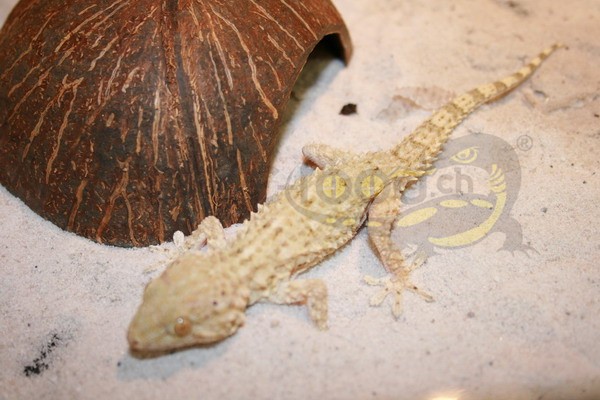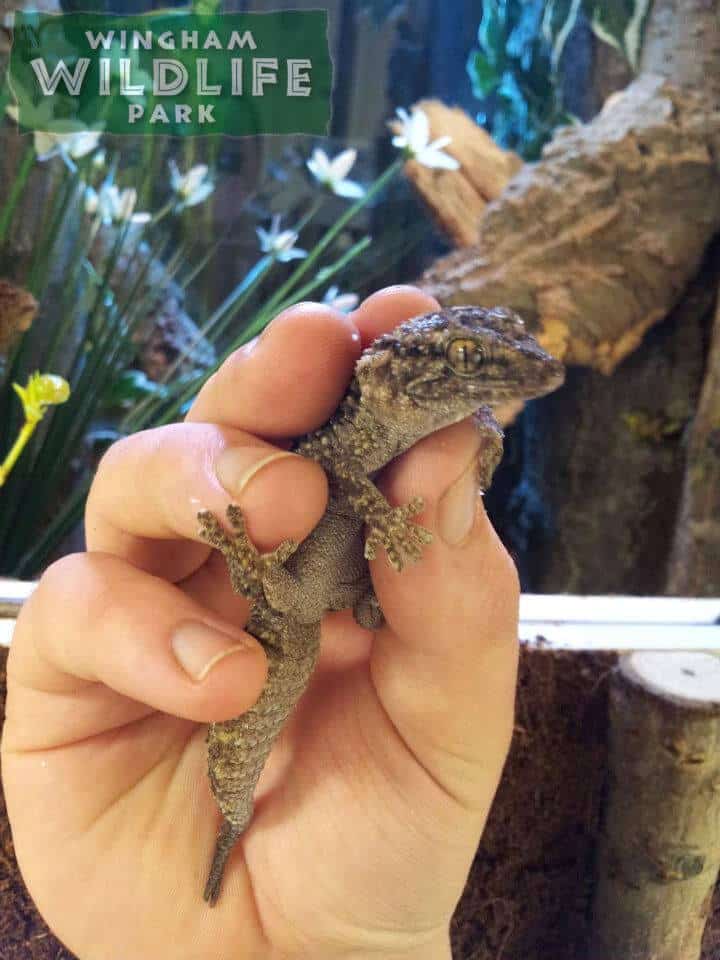Qattara Gecko
The Egyptian gecko ( Tarentola mindiae ), also referred to as Qattara Gecko, Gecko is a species in the genus Tarentola. The species name honors the Egyptian environmentalist Mindy Baha El Din ( 1958-2013 ).
Features
The Egyptian gecko is a medium sized, sturdy built gecko reaches a head -body length of 81 mm and a total length of 14 cm. The back is covered with regular strips of protruding tubercles. On the tail back the tubercles are round and blunt. The tubercles have strong middle keels and many side keels. They are surrounded by rosettes of five to eight medium-sized, horseshoe -shaped scales. Laterally, the tubercles are separated by two or three small scales. The tubercles in the area of the temporal bone are unclear and separated by approximately the same scales. There are a number of enlarged scales behind the chin ( Postmentalia ), three to five times larger than the throat plates ( Gularen ). The toes are moderately widened. The bottom of the fifth toe is covered with an average of 16 suckers. The rostral scale is separated from the nostrils. The back is light brown. Between occiput and sacrum run five to six black stripes on the back. On the neck there are two dark lines running almost parallel to the snout of the rostral to the interorbital region. At the top of the head and the limbs are more irregular, dark stripes and marbling. The belly is grayish white, each scale has one or more very small, dark spots. The iris is ocher.
Distribution and habitat
The Egyptian gecko is known from the north-western Egypt and northeastern Libya. From Libya, there is only one record from the year 1932, when a copy was found in the Jialo oasis. According to Sherif Baha El Din, who had described this species in 1997, it might be in several copies, which were collected in Cyrenaica and considered Tarentola mauritanica to act representative of Tarentola mindiae. In Egypt, the Egyptian gecko occurs in the Qattara Depression and the Siwa Oasis and its surroundings. It inhabits vegetated areas in the otherwise flat and barren stone and sand deserts where temperatures of 18 to 30 ° C prevail. Microhabitats of bark and wood of acacia and other trees are the preferred habitat.
Way of life
The Egyptian wall gecko is crepuscular. Its diet consists among other things of crickets, grasshoppers and spiders. The species is oviparous.
Status
The IUCN classifies this species as " safely " ( least concern ). Although at present there are no known major threats, it is potentially vulnerable to the loss of habitat (especially in Siwa ).










